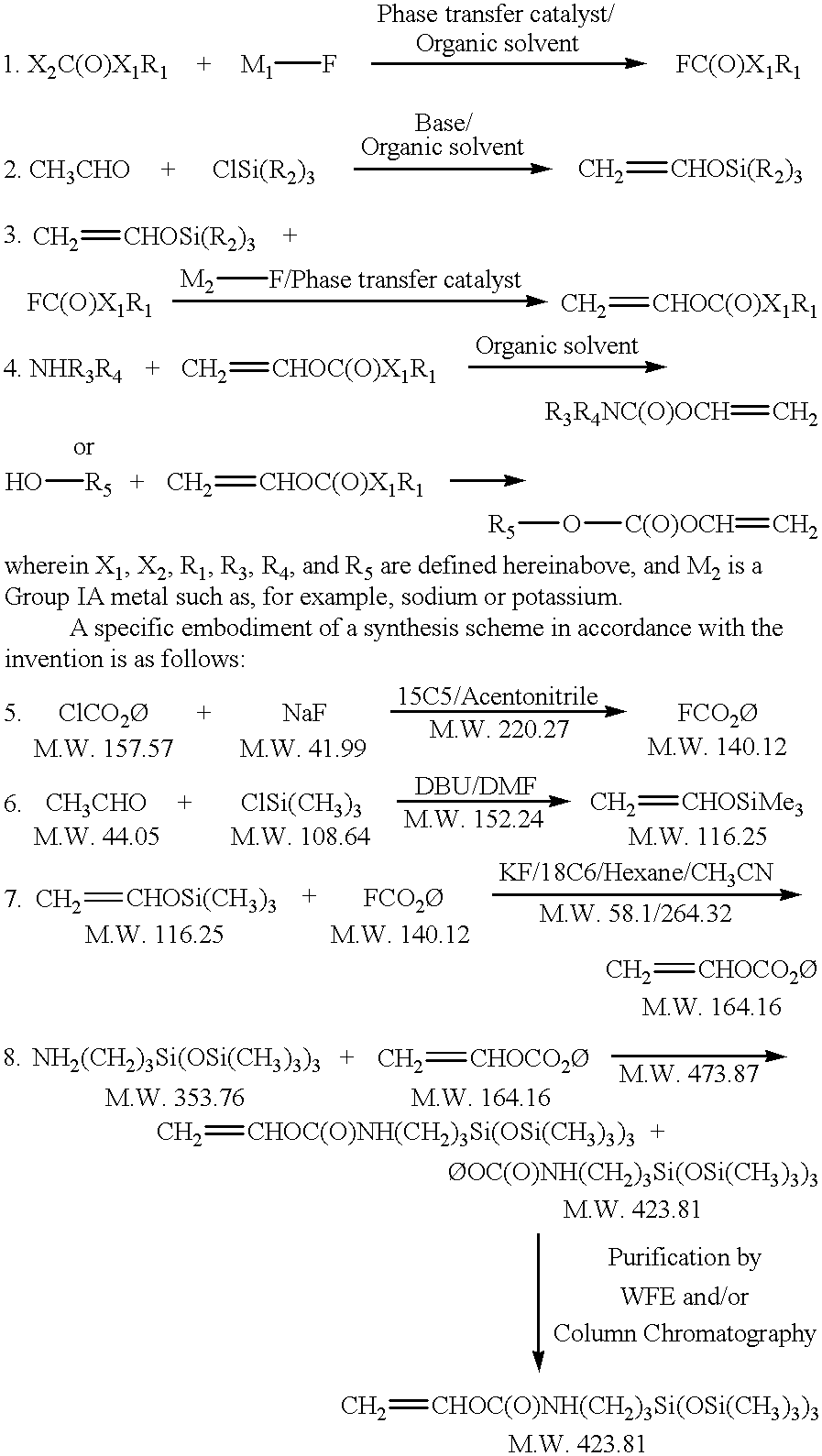Synthesis of vinyl carbonates for use in producing vinyl carbamates
- Summary
- Abstract
- Description
- Claims
- Application Information
AI Technical Summary
Problems solved by technology
Method used
Image
Examples
example 2
Synthesis of Vinyloxytrimethylsilane (VOTMS)
To a solution of DBU in DMF is slowly added chlorotrimethylsilane at a temperature below 30.degree. C. over approximately 2 to 3 hrs. To this mixture is then added a solution of acetaldehyde in DMF over approximately 1 to 2 hours. The temperature of the reaction is maintained below 30.degree. C. during the addition. The reaction mixture is stirred for 1 to 2 hours and checked for reaction completion by G.C. The volatile components are removed from the mixture via distillation under vacuum into a dry ice chilled receiver. The distillate from this flash distillation is then fractionally distilled at atmospheric pressure to give pure product in an approximate 70 percent theoretical yield. (boiling point: approximately 78.degree. C.)
example 3
Synthesis of Vinylphenylcarbonate (VPC)
To a solution of phenylfluoroformate in hexanes and acetonitrile is charged potassium fluoride and 18-crown-6. The mixture is heated into solution at 40.degree. C. Subsequently, vinyloxytrimethylsilane is slowly added at between 40.degree. C. and 50.degree. C. The mixture is further stirred for a minimum of two hours. Reaction progress is monitored by G.C. The solution is filtered through a short column of silica gel to remove potassium fluoride. The solvent is removed under reduced pressure and the product is vacuum distilled at 48.degree. C. to 50.degree. C. at 0.6 mm Hg at 80.degree. C. to 82.degree. C. at 6 mm Hg. The yield is determined to be approximately 70 percent of theoretical.
example 4
Synthesis of 3-[Tris(trimethylsiloxy)silyl]propyl Vinyl Carbamate
A solution of 3-aminopropyltris(trimethylsiloxy)-silane in THF is heated to 50.degree. C. To this mixture is added a solution of vinylphenylcarbonate in THF with a mild exotherm being observed. Reaction completion is monitored by G.C. The reaction time is a minimum of one hour. The reaction is diluted with hexanes, washed with 2N HCl, saturated aqueous NaCl and dried over magnesium sulfate. The solvent is removed under reduced pressure and the crude product is purified by any one of the methods set forth herein, such as the method proposed in Example 6. Alternatively, this procedure can be combined with the purification technique as set forth in Example 5.
PUM
| Property | Measurement | Unit |
|---|---|---|
| Polarity | aaaaa | aaaaa |
Abstract
Description
Claims
Application Information
 Login to view more
Login to view more - R&D Engineer
- R&D Manager
- IP Professional
- Industry Leading Data Capabilities
- Powerful AI technology
- Patent DNA Extraction
Browse by: Latest US Patents, China's latest patents, Technical Efficacy Thesaurus, Application Domain, Technology Topic.
© 2024 PatSnap. All rights reserved.Legal|Privacy policy|Modern Slavery Act Transparency Statement|Sitemap


